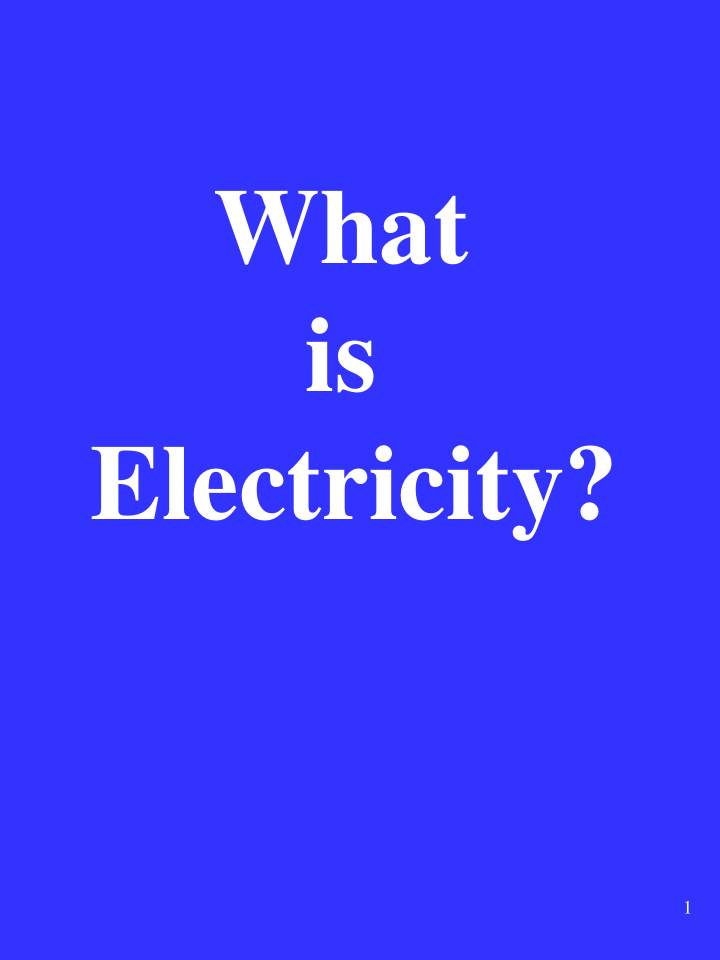



What is Electricity? 1
ATOM 2
Water Pipe Pump Water Pipe Wire + Wire - 3
EMF Potential Difference Between Two Points Source of Energy Electrical Pressure Voltage Friction / Static Triboelectric Chemical Electromechanical Heat Thermoelectric Light Photoelectric Pressure Piezoelectric Magnetism Electromagnetic 4
5
6
7
1910.304(e) OVERCURRENT 1910.404(e) PROTECTION (e)(1)(i) Conductors and equipment shall be protected from overcurrent in accordance with their ability to safely conduct current. (1926 also states that conductors shall have sufficient ampacity to carry the load) (e)(1)(ii) Overcurrent devices shall not interrupt the continuity of the grounded conductors unless all conductors grounded (hot) as well as grounded (neutral) are opened simultaneously (e)(1)(iii) Disconnect required for all cartridge fuses (over 150 volts to ground) which are accessible to other than qualified persons (e)(1)(iv) Location in or on premises overcurrent devices shall be readily accessible. Shall not be located where exposed to physical damage or located in the vicinity of easily ignitable material NEC Article 240-1 to 240-101 8
1910.304(e) OVERCURRENT 1910.404(e) PROTECTION contd. (e)(1)(v) Arcing or suddenly moving parts Fuses & Circuit Breakers shall be so located or shielded that employees will not be burned or otherwise injured by their operation (A) through (C) - CIRCUIT BREAKERS (e)(1)(vi)(A) Circuit Breakers shall indicate whether they are in the open (off) or closed (on) position (e)(1)(vi)(B) Circuit Breaker handles are operated vertically rather than horizontally or rotationally, the up position of the handle shall be the closed (on) position (e)(1)(vi)(C) Circuit Breakers used as switches in 120 volt fluorescent lighting circuits, circuit breakers shall be marked “SWD” NEC Article 240-1 to 240-101 9
Current - 1 amperes (a) Voltage - E volts (v) Resistance - R Ohms (Impedence) Z ( ) 10
11
12
13
14
15
16
17
18
Recommend
More recommend